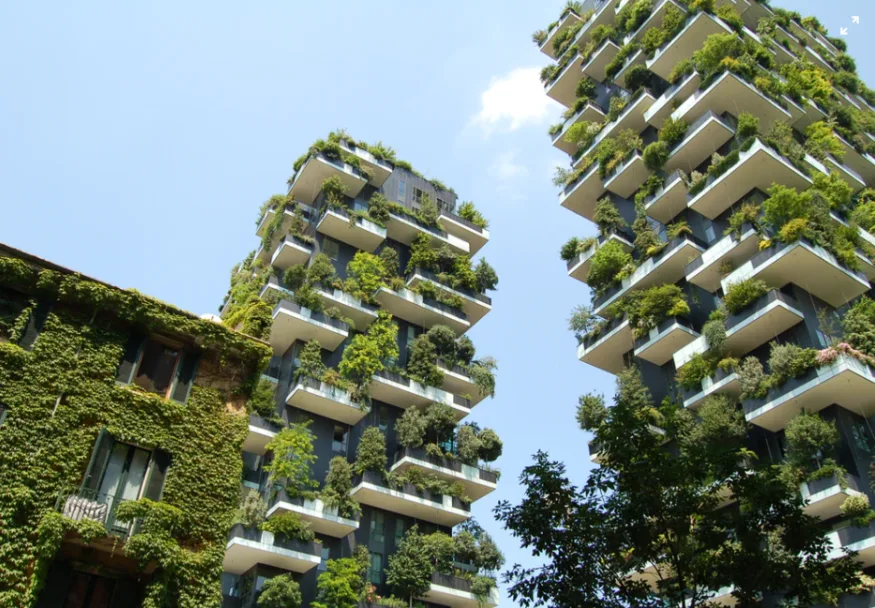
Net-zero is becoming increasingly trendy, but what does it actually mean?
Renewable energies and carbon offsets are used to achieve net-zero goals, however, some say that this is not doing enough to adequately fight climate change.
Net-zero projects and buildings have become increasingly common over the past few years as corporations aim to reduce their environmental impact and transition to sustainable practices. But what does the term really mean?
While there are many variations of the term, net-zero typically refers to the overall balance between the amount of carbon dioxide emitted and the amount captured from the atmosphere. There are many ways that this balance can be achieved, such as using solar panels to generate energy for an entire house or offsetting carbon emissions from fossil fuels by planting trees that capture the same amount of carbon that is released from generating energy.
For example, a net-zero house would create all of its lighting, heating, and cooling from renewable energy sources onsite and would be built to effectively retain heat in the winter and block it out in the summer to minimize the amount of energy needed for temperature control. Multi-use buildings can distribute energy across different stories, such as heat from a data centre being used to heat water in apartments. Homes and buildings could even become net negative if they produce more energy than they consume.
The Intergovernmental Panel for Climate Change (IPCC) states that emissions buildings are one of the single largest emitting sectors in Canada with residential, commercial and industrial buildings accounting for 17 per cent of Canada’s total greenhouse gas emissions in 2018. There are several examples of influential net-zero accomplishments in Canada, such as Whistler Blackcomb, who inspired their parent company Vail Resorts, Inc. to commit to a net-zero operating footprint across all of their 37 resorts by 2030.
All industry sectors are seeing the increasing trend of net-zero, even the sectors that are notorious for pollution, such as air travel. The European budget airline, easyJet, announced in November 2019 that they would become the first major carrier to operate net-zero carbon flights by investing in tree planting and projects that protect against deforestation. Other companies are reaching their net-zero targets by investing in renewable energy projects at other locations to offset their carbon emissions.

Bosco Verticale (Vertical Forest) are a pair of residential towers in the Porta Nuova district of Milan, Italy. Each tower houses 900 trees, 5,000 shrubs and 11,000 perennial plants, which help mitigate smog and produce oxygen. Credit: Chris Barbalis
DOES CARBON OFFSETTING ACTUALLY HELP THE CLIMATE?
The best way to reduce carbon emissions is to reduce our energy usage, and some argue that carbon offsetting allows companies and buildings to keep polluting and avoid repairing the environmental damage that they are creating by their emissions.
Environmental groups, such as Greenpeace and the World Wildlife Fund (WWF), have critiqued carbon offsetting because they argue it does not reduce overall amount of carbon dioxide in the atmosphere and should only be used as a last resort after other measures have been explored or implemented to reduce or avoid greenhouse gas emissions.
“Purchasing offsets can be seen as an easy way out for governments, businesses and individuals to continue polluting without making changes to the way they do business or their behaviour,” reads a joint-statement from Friends of the Earth, Greenpeace, and WWF-UK.
Reducing emissions of carbon dioxide and other greenhouse gases is essential to combat climate change. Global temperatures will continue to rise even if we suddenly stopped emitting greenhouse gases today because the carbon dioxide that is already in Earth's atmosphere will continue warming the planet for hundreds of years.
While net-zero practices that use carbon offsetting strategies are a step in the right direction, effectively addressing climate change requires a drastic reduction in carbon emissions to minimize the amount that Earth warms.

